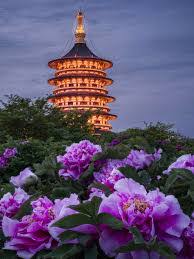The height of cuisine and adventure in Italy

Rome: If you thought Italy’s allure lay largely in the opportunity to wile away the hours eating and drinking endlessly in pastel-hued piazzas—well, you’d be right. But that’s just part of its perennial magic.
For those whose version of la dolce vita includes extraordinary natural beauty, the Dolomites are a true Valhalla. Rising over 10,000 feet in the northern Italian Alps and bookended by the ritzy enclaves of Cortina d’Ampezzo to the east and Bolzano to the west, the mountains—annexed by Italy from Austria after World War I—cast an ethereal spell, thanks to their otherworldly vertical rock formations, evergreen-blanketed valleys, and clouds that hover close enough to touch. A natural phenomenon called enrosadira (literally, “becoming pink” in Italian) amplifies their sculptural majesty: depending on the hour, the outcrops seem to glow a spectrum of shades ranging from bright yellow to fiery red to soft violet. In perhaps the ultimate compliment, renowned Swiss-French design master, Le Corbusier, once described the range as “the most beautiful natural architecture in the world.”
And while the Dolomites beckon in winter for obvious reasons—they comprise the world’s largest ski resort, encompassing nearly 750 miles of trails in 12 impossibly picturesque valleys covering nearly 1,200 square miles—their warm-weather appeal continues to grow, as does the region’s relatively unsung reputation for culinary artistry.
The province of South Tyrol, one of five that the Dolomites span, scrumptiously showcases the area’s gastronomic gusto. Located at the northernmost point in Italy—bordering Austria to the north and east and Switzerland to the west—it has the highest concentration of Michelin stars per inhabitants in the country, with 25 across 19 restaurants. Alta Badia, a pristine hamlet of six villages in the south of the Val Badia valley, boasts four coveted stars within less than six square miles, and is widely considered the mountains’ gourmet capital.
In its sleepy village of San Cassiano, Restaurant St. Hubertus, helmed by celebrated chef Norbert Niederkofler, received its third Michelin star last year, and dazzles diners with signature dishes including beetroot gnocchi and sweetbread with bitter herbs and pine. Meanwhile, chef Nicola Laera presides over the one-star La Stüa de Michil in Corvara’s Hotel La Perla.
Alta Badia is steeped in rich cultural flavor as well. Archaeological evidence suggests the Raetians, as its first residents were known, lived here as early as 1700 B.C. When the Romans conquered the Dolomites some 2,000 years ago and absorbed them into the Roman empire, the Raetians adopted the vulgar Latin spoken by Roman magistrates, soldiers, and tradesmen; over time it evolved into the Ladin tongue, which combines Italian, French, Provençal, and Catalan influences. Still spoken by some 4% of South Tyrol’s residents, it remains one of the province’s official languages, along with Italian and German.
Ladin influence and culinary expertise meld deliciously at San Cassiano’s Hotel Ciasa Salares, a stylishly rustic, 50-room hideaway that’s a stomping ground of Italian VIPs like former Ferrari chairman Luca Cordero di Montezemolo and Olympic ski champion Alberto Tomba. Wine Bar Siriola, one of the hotel’s four restaurants, elevates comfort food to alpine heights with such decadent dishes as fried pizza with San Marzano tomato, Apulian burrata, and Cantabrian anchovies, followed by homemade ravioli with buffalo ricotta, artichokes, and lamb ragu. Meanwhile, at the al fresco La Terrazza, wide-angle views of the surrounding valley accompany inspired plates like broiled Comté potato dumplings with walnuts, pine nuts, and spinach, and venison medallions with polenta and sautéed chanterelles.
The private garden at the Rosa Alpina, a hotel in San Cassiano in Alta Badia, Italy. Photo: Alex FilzIn time for the summer season, the hotel’s third-generation owner, Stefan Wieser, is converting the achingly atmospheric, amber-lit wine cellar, long host to festive fondue parties held around its hand-hewn wooden tables, into a full-fledged restaurant with a menu ranging from starters to desserts. A new chocolate room will tempt aficionados with 120 high-end varieties from around the world, including revelations like a Venezuelan chocolate fountain tempered with olive oil, while the cellar will expand to house some 2,000 labels (all selected by Wieser) and 24,000 bottles, making it one of the largest in Italy.
If all this overindulging compels you to moving, the Dolomites offer an ever-evolving array of action-packed options. Intrepid hikers with a hankering for history can explore the hundreds of vie ferrate (iron ways)—mountain routes equipped with suspended bridges and fixed ladders that allow non-experts to scale the steep peaks (guides are strongly recommended). First built by Alpine guides at the end of the 19th century, they later came in handy for moving troops and supplies along the Italo-Austrian border during World War I. The Dolomiti SuperSummer card provides access to the mountains’ vast networks of hiking and mountain bike routes via some 100 lifts across all 12 valleys; this year from May 25 through November 3.
Dolomite Mountains, a luxury tour operator with an office in the United States, curates active and gourmet itineraries. Photo: Dolomite MountainsMountain and road bikers can also take advantage of Alta Badia’s plethora of cycle-centric programming like Sellaronda Bike Day. A summer highlight, the festival closes the roads around the Sella-Massif—an iconic cluster of four mountains flanked by the Alta Badia and Val Gardena valleys—and welcomes bikers of all ages and abilities for a peddling extravaganza. (If you’d rather soak up the scenery than break a sweat, Alta Badia’s five electric-bike rental stations present an inviting alternative for getting around.)
Meanwhile, a series of special events will mark the tenth anniversary of the Dolomites’ designation as an UNESCO World Heritage site.
Luxe options for high-altitude adventures also abound. Enlist the expertise of Dolomite Mountains, a luxury tour operator with an office in the U.S., to curate a trip that showcases the very best of the range. Its hiking and gourmet itinerary includes excursions around the Tre Cime di Lavaredo—perhaps the Dolomites’ most famous peaks—and meals at a Ladino working farm and a two-star Michelin restaurant.
Tour operator Drive Elements tailors a number of automotive tours, which can include filming, photoshoots, test drives, helicopter rides, rafting, speedboat riding, ziplining, and even Venice in a gondola.
Tour operator Drive Elements tailors a number of automotive tours, which can include filming, photoshoots, test drives, helicopter rides, rafting, speedboat riding, ziplining, and even Venice in a gondola. Photo: Dennis De Martin/Drive ElementsFor those who prefer horsepower to hiking, Drive Elements creates over-the-top Dolomites driving experiences for steel-nerved speed demons. One high-octane outing, the “Dolomiti Hero,” tests adrenaline addicts’ mettle with a one-day race along 200 miles of winding mountain roads, traversing some 65,000 feet and 13 hair-raising passes en route. Opt for the company’s ultimate itinerary and you’ll be picked up by helicopter at your arrival airport (Munich, Milan, or Venice) and whisked to your top-tier hotel to unwind in the best suite in the house. From there, the chopper delivers you to a mountain pass, where a supercar—a Bugatti Veyron, Lamborghini Huracán, or Ferrari 458, for example—awaits.





